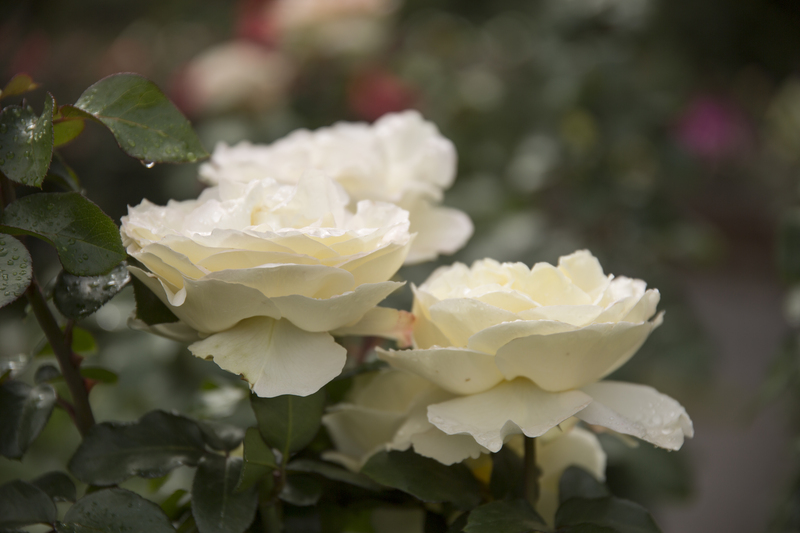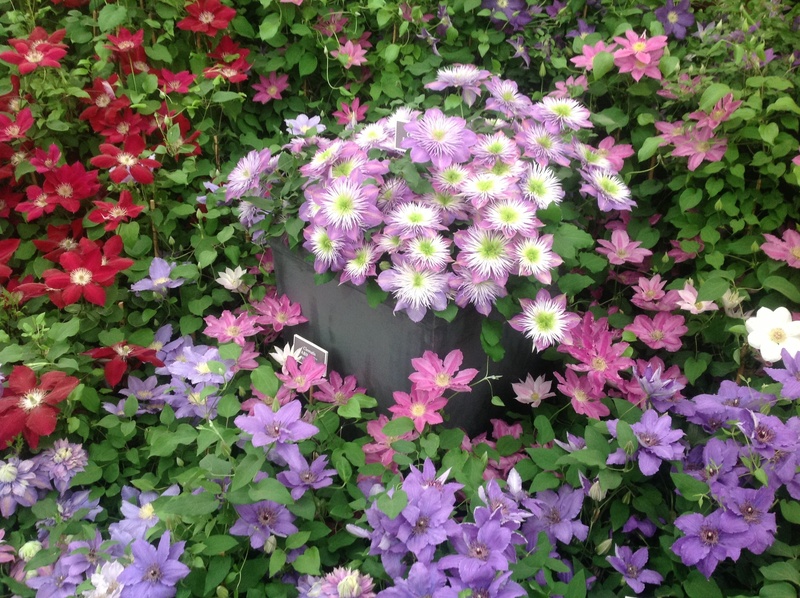Designing Gardens with Inspired Hedge Trimming Techniques
Posted on 22/06/2025
Designing Gardens with Inspired Hedge Trimming Techniques
If you're passionate about landscaping, inspired hedge trimming techniques offer a unique way to elevate your garden's aesthetics and functionality. Well-groomed hedges not only define garden boundaries but also become living sculptures, adding personality to your outdoor space. This comprehensive article will guide you through everything you need to know about designing gardens with creative hedge trimming methods, from the basics to advanced artistry, ensuring you achieve a stylish and flourishing landscape.
Why Use Inspired Hedge Trimming in Garden Design?
Hedges have long been a staple in garden design, serving both decorative and practical functions. But inspired hedge trimming techniques take this staple element to the next level. Here's why modern garden designers are embracing this approach:
- Personalization: Custom shapes and patterns express individuality and thematic intent.
- Structure: Defines and organizes garden spaces, creating visual flow and privacy.
- All-Season Interest: Evergreen hedges, when shaped creatively, offer structure even in winter months.
- Wildlife Value: Skillfully trimmed hedges provide habitats and shelter for wildlife.

Understanding the Art of Hedge Trimming
Proper hedge trimming is both an art and a science. It requires understanding of plant biology, growth habits, as well as visual design principles. When learning or refining your hedge shaping techniques, consider the following essentials:
Key Hedge Types for Trimming
- Formal Hedges: Symmetric, crisp lines favored for classic or modern gardens.
- Informal Hedges: More relaxed, natural shapes for cottage or wildlife-friendly gardens.
- Topiary Hedges: Sculptural hedges trimmed into creative shapes--animals, spirals, geometric forms.
Best Plant Species for Inspired Hedge Trimming
Some plants respond better to frequent shaping and intricate designs. Popular hedge species for intricate gardens include:
- Buxus (Boxwood): Excellent for dense, detailed topiary and classic garden hedges.
- Taxus (Yew): Tolerant to regular hard-trimming; maintains crisp edges.
- Ligustrum (Privet): Fast-growing, easy to shape, ideal for lush green boundaries.
- Lonicera nitida (Honeysuckle): Versatile, small leaves, perfect for fine details.
- Photinia and Laurel: Prized for color contrast and bold outlines.
Principles of Garden Design Using Hedge Trimming
For gardens that truly impress, integrate inspired hedge design with proven landscaping principles:
1. Establishing Structure and Flow
- Boundary Definition: Use bold, trimmed hedges to separate zones--like vegetable plots, paths, seating areas.
- Guided Movement: Shaped hedges can direct sightlines and foot traffic naturally through the garden.
- Backdrop or Focal Point: Position a creatively trimmed hedge as either a subtle frame or a standout centerpiece.
2. Balancing Form, Texture, and Scale
- Contrast: Mix simple and elaborate hedge shapes for visual interest.
- Proportion: Match hedge heights and massing to the size of your garden and adjacent features.
- Complementary Plantings: Soften formality with perennial beds or ornamental grasses alongside formal hedges.
3. Color and Seasonal Interest
- Mix Foliage: Utilize colored hedge species--like red-leaved Photinia--for highlights.
- Evergreens vs Deciduous: Combine for changing seasonal effects, structure, and privacy.
- Underplanting Options: Add bulbs and shade-loving plants at hedge bases for layered beauty.
Advanced Hedge Trimming Techniques to Inspire
Unleashing your creativity is central to designing gardens with inspired hedge shaping. Here are advanced techniques to explore:
1. Topiary Artistry
Topiary is the pinnacle of creative hedge trimming--crafting living sculptures with shears and imagination. Consider classic geometric shapes (spheres, pyramids, cubes), whimsical animals, or even abstract forms. For best results:
- Start with boxwood or yew for small to medium topiary.
- Use wire frames as a guide for complex shapes.
- Trim regularly for sharp lines and defined features.
2. Cloud Pruning (Niwaki)
Cloud pruning, inspired by Japanese niwaki, shapes shrubs or hedges into undulating, cloud-like masses. This evocative style brings a sense of calm and artistry to modern or zen-style gardens.
- Prune selected branches into rounded clumps at various heights.
- Remove crossing branches to showcase form and structure.
- Highlight with uplighting for magical nighttime effects.
3. Pleaching and Espalier Techniques
For vertical garden design, create living walls by training hedges or trees against frames:
- Pleaching: Weaving young branches together to form a hedge atop clear stems--perfect for living screens.
- Espalier: Training shrubs or trees in two-dimensional forms along walls or fences, ideal for tight spaces.
4. Thematic and Geometric Designs
Use inspired hedge cutting patterns to reflect themes such as mazes, Celtic knots, or waves. In formal settings, geometric parterres dazzle with their symmetry and precision.
- Mark designs with string or chalk before trimming.
- Maintain regular edges to preserve clarity of patterns.
- Consider color or texture contrasts in adjacent plantings for added impact.
Tools and Equipment for Professional Hedge Trimming
Achieving crisp, healthy results depends on using the right hedge trimming equipment. Here's what you'll need:
- Hedge Shears: For manual, precise shaping of small and medium hedges.
- Electric or Gas-Powered Trimmers: Efficient for long, tall, or large-volume hedges--choose models with adjustable blades for versatility.
- Topiary Shears: Small-blade shears for intricate detailing.
- Loppers and Pruners: For thicker branches or old wood removal.
- String, Stakes, and Templates: Essential for marking out straight lines and complex designs.
- Protective Gear: Gloves, safety goggles, and hearing protection for safe operation.
Step-by-Step Guide: Designing a Garden with Creative Hedge Trimming
- Plan Your Layout: Sketch your garden and position hedges for structure, privacy, or artistry.
- Choose Appropriate Plants: Opt for species suited to your design--a mix of evergreens and colorful, deciduous types adds depth.
- Install and Train Young Hedges: Plant in well-prepared soil; water regularly and begin basic formative pruning after the first year.
- Mark Patterns and Shapes: Use string, frames, or templates to ensure symmetry and consistency.
- Trim Gradually: Begin with light cuts, slowly shaping the hedge over several seasons to avoid plant shock.
- Maintain Regularly: Prune 2-3 times a year for formal shapes, less frequently for informal designs.
- Feed and Mulch: Fertilize annually and mulch to conserve moisture and suppress weeds.
Maintenance Tips for Healthy, Beautiful Hedges
Routine care is essential for sustainable beauty and vigor. Adopt these best practices for hedge maintenance:
- Sharp Tools: Always use sharp blades to produce clean cuts, minimizing disease entry points.
- Avoid Cutting in Hot Weather: Trim early morning or late afternoon to reduce stress on plants.
- Shape Tapered Sides: Wider at the base for light penetration and healthy growth.
- Manage Pests/Diseases: Inspect regularly for signs of blight, mites, or fungal issues.
- Rejuvenation Pruning: For overgrown or neglected hedges, cut back hard in phases to encourage new growth.
Common Mistakes to Avoid in Hedge Trimming
Even experienced gardeners sometimes falter. Sidestep these errors for thriving and inspired hedge designs:
- Overpruning: Cutting too much at once can shock or even kill the hedge.
- Neglecting Shape: Failing to maintain a tapered shape causes leggy, sparse bases.
- Sporadic Maintenance: Irregular trimming leads to coarse, unbalanced growth.
- Wrong Plant Choice: Select species suited for your intended design and local climate.
- Poor Tool Maintenance: Dirty or dull tools can injure plants and spread disease.
Inspirational Garden Hedge Trimming Ideas
- Maze Gardens: Create labyrinths with clipped privet or yew for interactive, magical spaces.
- Whimsical Topiary: Add playful character with animal- or abstract-shaped topiaries at entrances or along paths.
- Sculpted Screen Walls: Achieve privacy and artistry with patterned pleaching or undulating cloud forms.
- Seasonal Interest Parterres: Combine variegated and flowering hedges for living tapestries.
- Modern Minimalist Edging: Razor-sharp linear hedges for contemporary garden styles.

Embracing Sustainability with Hedge Design
Today's best gardens balance beauty and ecology. Consider these eco-friendly hedge practices for a greener landscape:
- Native Species: Provide vital habitats for pollinators and birds while requiring less input.
- Mixed Plantings: Combine hedge species for disease resistance and biodiversity.
- Compost Trimmings: Recycle pruned material as mulch or compost to nourish your garden.
- Water Conservation: Mulch heavily and choose drought-tolerant hedging where possible.
- Organic Care: Avoid chemical pesticides and fertilizers, opting for natural soil amendments and integrated pest management.
Conclusion: The Living Art of Inspired Hedge Trimming
Designing gardens with inspired hedge trimming techniques invites you to see hedges as more than just boundaries--they are vibrant, evolving works of art. From formal lines to playful forms, every trimmed hedge tells a story and shapes the atmosphere of your garden retreat. By choosing the right plants, mastering essential methods, and nurturing your living sculptures, you can transform even ordinary outdoor spaces into exceptional sanctuaries of beauty and enjoyment. Embrace experimentation, and let the cut of your shears reflect your personal vision--your garden's next chapter starts here.
Frequently Asked Questions (FAQs) on Hedge Trimming in Garden Design
-
How often should I trim garden hedges?
Formal hedges typically need trimming two to three times during the growing season. Informal or flowering hedges can be pruned once after blooming. -
What is the best time of year to shape hedges?
Shape most evergreen hedges in late spring or mid-summer. Avoid trimming during drought or extreme temperatures. -
Can I revive an overgrown hedge with inspired trimming?
Yes, rejuvenation pruning--removing older stems and gradual shaping over a few years--can restore health and appearance to neglected hedges.
Ready to bring inspired hedge trimming into your garden? Start planning your living masterpiece today and watch your landscape flourish with personality and precision!



